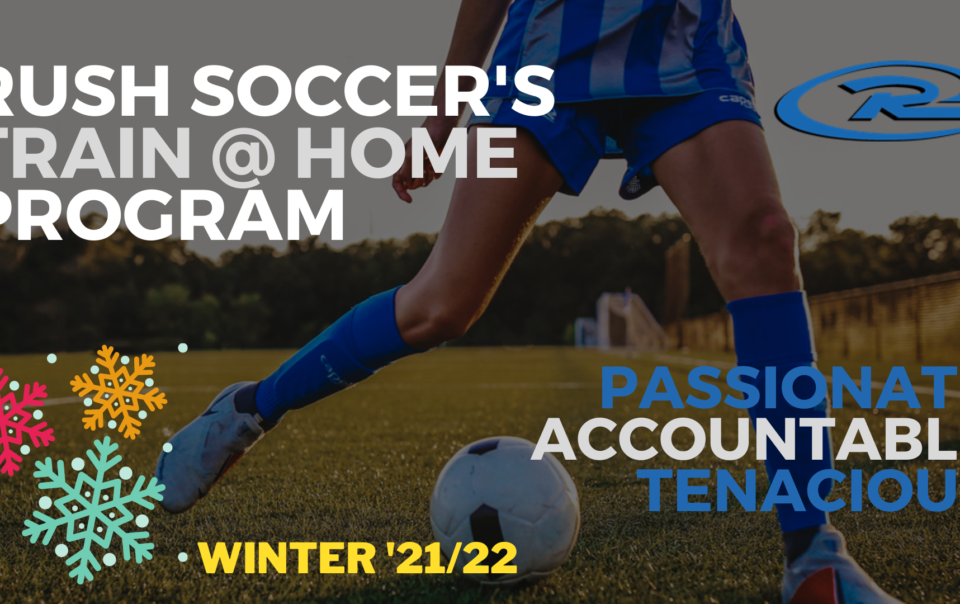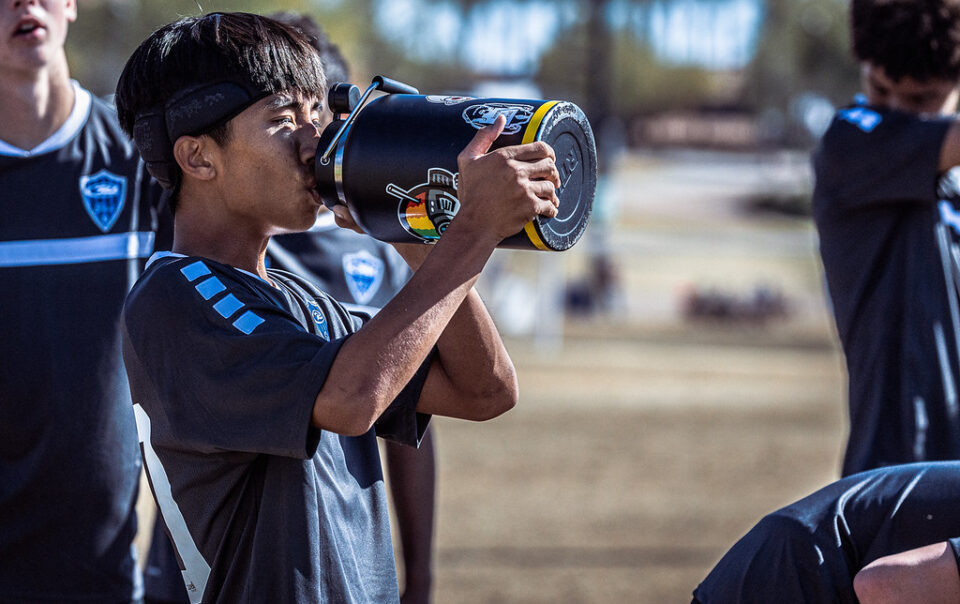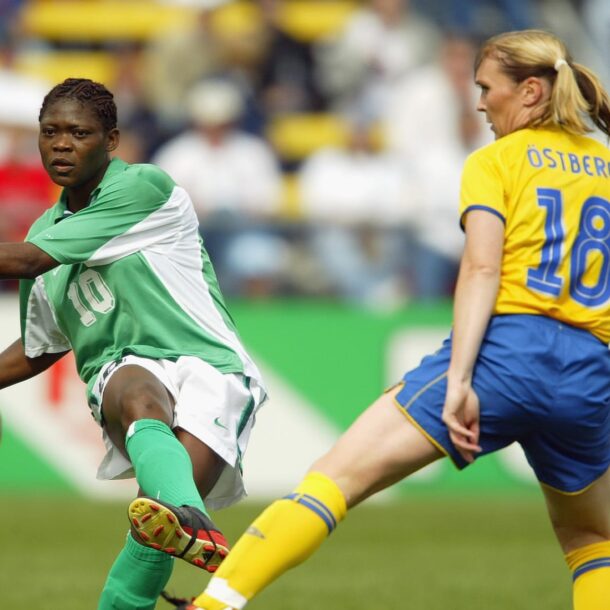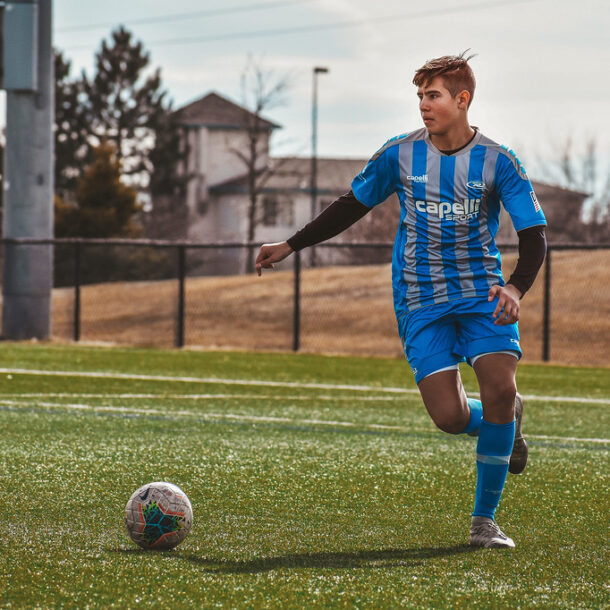
*Clique aqui para a versão em português deste documento – The Rush Way Senior Division (Portugues)
*Clicca qui per la versione italiana di questo documento– The Rush Way Senior Division (ITALIA)
THE RUSH WAY AGE GROUP GUIDES
The Rush Way Age Group Guides provide a more in depth look at Rush Soccer’s Developmental Blueprint, covering technical, tactical, physical, and psychosocial considerations, as well as guiding on how to apply Rush Way philosophies effectively to each age group.
THE RUSH WAY PHILOSOPHY
The Rush Way is the embodiment of all that is Rush Soccer; the rules and manner in which Rush members hold themselves and how they expect other Rush members to conduct themselves. This is not inherent in all people, but can be learned. The Rush Way encourages passion, leadership, respect and, above all, quality. Before reading this document and complementary to any age group curriculum, every coach should read the entire Rush Way Philosophy.
Formation: Rush Soccer uses the 1-3-5-2 as its preferred formation and starting point to implement its style of play. However, the Rush Way understands soccer is dynamic with constant movement. A formation represents simply a starting point related to a certain moment of the game.
Rush Soccer encourages coaches to vary approaches depending on a deep understanding of their players’ strengths and weaknesses as well as the rival’s. What Rush Soccer sustains at all times is its style of play.
Rush teams are proficient in readapting this base formation within the game onto 1-5-3-2 and 1-4-3-1-2 depending on the needs and situations encountered.
As we want our players to be adaptable, experiencing these alternatives and other popular base schemes like 1-4-3-3 and 1-4-2-3-1 is important for their development, therefore encouraged.
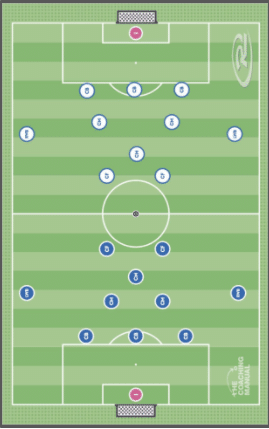
6-3-1: Even if these are performance age groups, the 6-3-1 still acts as a measuring stick. A team that’s getting much better results than this is probably competing at a lower level than it should. Contrary to that, if the team results are too far below this record, it’s probably competing at a higher level than it’s prepared to.
70 Games & Playing Time: Playing time for any individual is completely at the coach’s discretion. Rush encourages that playing time at all levels should be equal throughout the season. Limiting team roster size will aid in increased playing time for all players. Remember the spirit of the 70 Games Philosophy stated at The Heart Of The Rush: One of the main objectives of a Rush club must be to provide opportunities and environments for the players to elevate the overall number of playing hours as much as possible. At this stage, we believe it is a cornerstone of our player development approach to provide 70 11v11 learning instances along a calendar year. This is also explained in further detail at The Heart Of The Rush.
Core Values: There are 11 players on the field and so Rush Soccer has 11 core values as well. Highlight them all at this stage.
- Accountability
- Advice
- Empathy
- Humility
- Enjoyment
- Leadership
- Passion
- Respect
- Safety
- Tenacity
- Unity
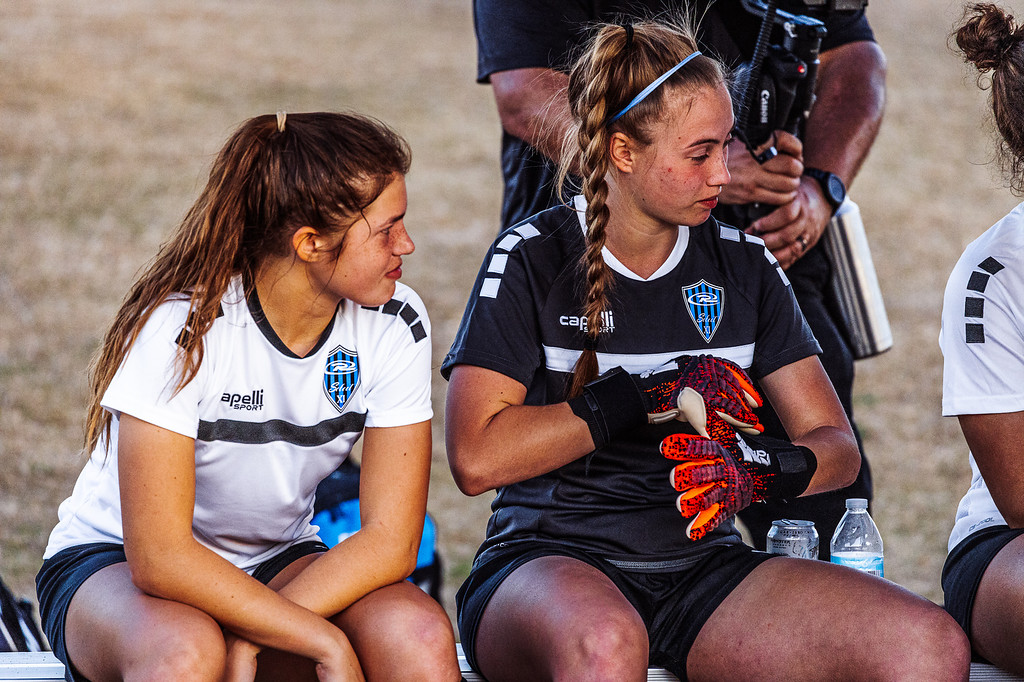
Player Position: By this stage, players are fully specializing in the positions that maximize their abilities and don’t overexpose their weaknesses. We still suggest to develop players in two positions, having at least one alternative to their main role on the team.
Substitutions: When possible and regardless of the state of the game, all players should exchange courtesy with their replacement. This will promote team spirit and give confidence to the players entering the field.
Pre-game / Warm Up Routines: For this age group, the Rush Way suggests pre game routines that include a global body warm up, followed by an activity to review a concept fresh on the player’s minds. Leaving at the end a few minutes for the players to warm up freely is also advisable. Keep the entire warm up period between 15 and 30 minutes.
During the Match: Games are a great coaching opportunity, but caution, don’t over do it. Coach actively but don’t misunderstand that with constant narrating and interventions. Actively means engaged. Make sure your coaching is positive and builds confidence, like stated in the Rush Blue Thread, and make most of your comments when off the ball and preferably in natural stoppages.
Half Time: Rush encourages players to analyze problems and discuss solutions on their own before coach intervention. Players should be given a couple of minutes away from the coaching staff to voice opinions and discuss solutions. The coach should then bring their views and knowledge to the group. The Rush Way expects our coaching to be positive and build confidence, like stated in The Rush Blue Thread.
Post Game: Once again, the Rush Way expects our coaching to be positive and build confidence. Take the opportunity to promote core values like Humility & Respect when winning, and Tenacity & Unity when losing. Keep it brief and don’t go on profound game analysis. Let both the players and yourself cool down and take some time to analyze the match objectively.
Greeting: Players are expected to greet the staff with a handshake for all local, national and international staff. The Rush staff across the country expect their players to shake their coaches hand each time they meet. Why?…respect, build social skills, break down barriers, learn culturally accepted behavior, the list goes on.
Practice and Game Attendance: Is optional for all levels of player within the Rush Organization. Playing other sports and multiple sports at the same time is the choice of the family and zero repercussions will be administered the coaching staff. Players who wish to become better and succeed within the game will attend all practices and games with the attitude of wanting to leave a better player. This is a reflection of our core value Accountability. The Rush Tutor Program promotes and encourages players who wish to push themselves the opportunity to practice with any other team within the club on any given day.
Acknowledgement: When a coach addresses a player during training or competition, it is important the player acknowledges. Communication is two-way.
Player First, Team Second: Similar to the European youth club structure, Rush encourages the player to be first before his or her individual team. For example, we encourage:
- The player to play with the adult team before his own team’s game.
- The player to train with older, experienced teams in place of his own teams.
- The player to guest play with an older team in place of their own game.
This enables players to be comfortable playing on teams that are in line with their ability regardless of age but based on performance in training and game days. Players are encouraged to train with higher level teams to accelerate their development.
Team Photos: The Rush has a certain style of their pictures, learn it and apply it. Take a photo of your rotating starting 11, and a whole team picture to promote Unity.
R.E.A.C.H.: All players should be aware of the R.E.A.C.H., Rush Equipment Assisting Children program and understand the importance of social responsibility. In a nutshell, this program provides the opportunity for our players to turn in their old uniform in order to donate to our less fortunate Rush clubs and players around the globe.
Coaches’ Sideline Behavior: From the outside, the conduct of the coach on the sideline can be perceived as a reflection of the conduct of all coaches within Rush Soccer. Coaches are a reflection of their players and should conduct themselves with respect for the officials, the opponents and the game of soccer. Remain positive when at all possible but motivational throughout. Coach actively but don’t misunderstand that with constant narrating and interventions. Actively means engaged. Education and being a first class role model are the paramount reasons that a coach has been given the honor to coach for Rush. It is always important to remember this.
Parents’ Sideline Behavior: Rush parents are expected to be positive, motivational and supportive to all players and officials. Learning the Rush chants is encouraged. Parents are expected not to coach from the sidelines but enjoy the experience of the game.
Players’ Sideline Behavior: Players are encouraged to support other Rush teams and give their full-hearted support. Learn the Rush song; be as loud but respectful as possible and help educate the rest of the country in the way soccer should be supported, as it is in the rest of the world.
Risk Management: Accepting a coaching position means accepting responsibilities. Exercise reasonable care, have a first aid kit, take a CPR course, as well as make sure every player departs with their parents or designated individuals, never leave a player alone after practice, among others.

The Rush Blue Thread
In Soccer as in life, most things are not black or white and common sense can’t be replaced. Exceptions aside, the Rush Blue Thread pursues the application of the following eight principles at all levels and ages. Rush Soccer has a player centered approach.
- The coach uses conditions to encourage competition.
- There is an ongoing cycle of feedback and reflection between the coach and the player.
- Each activity contains decision making elements.
- The design of the season, week, and training session meets the needs of the players and teams.
- Coaching points are based on visual cues.
- The ball is rolling at least 70% of the time in the session.
- A minimum of 75% of the session is game based and opposed.
- Coaching is positive to encourage and build confidence.
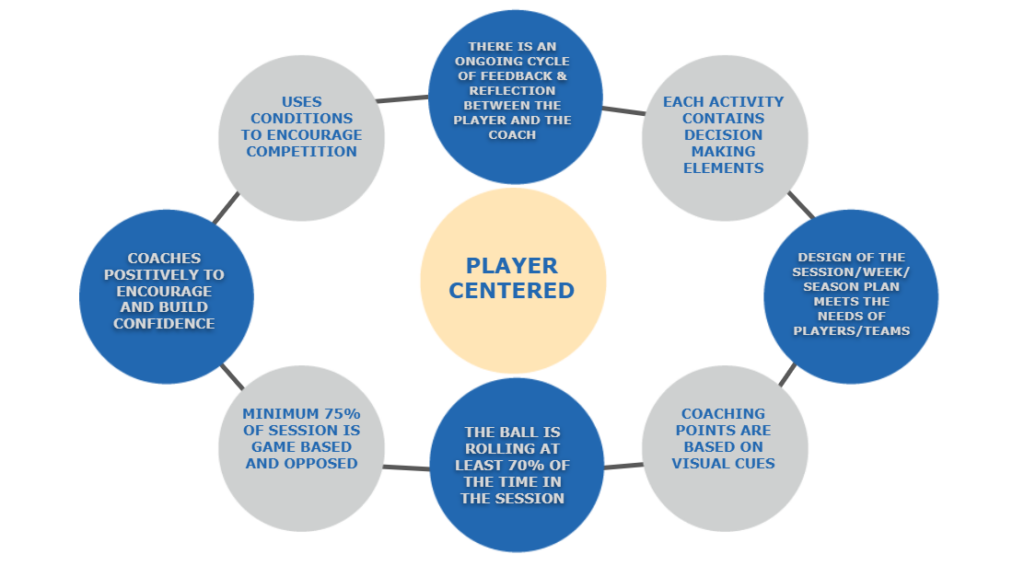
THE RUSH WAY: U16-U19 SENIOR DIVISION
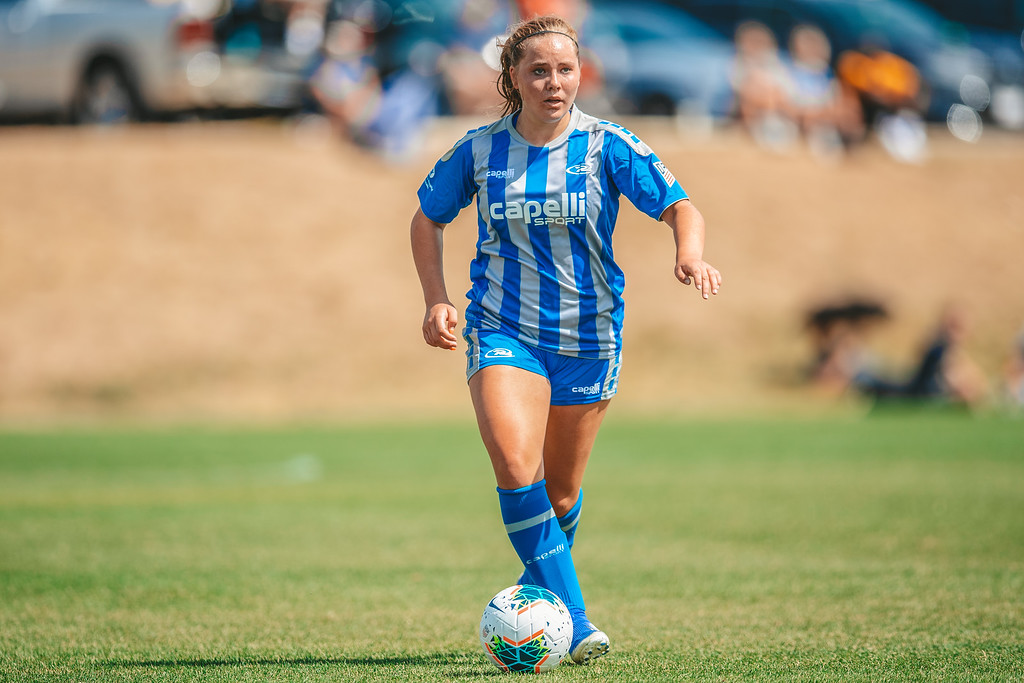
OBJECTIVE: Focus on Tactical Development, Adoption Of High Performance Habits, And Lead The Players In Their Specialization Stage.
Age Group Considerations: We’ll repeat this same statement for all age groups: When you coach a team or a player, the most important thing is always to understand who you are coaching.
By this stage, players should have a solid technical foundation. Their development is now directed to maximizing their strengths and managing their weaknesses. This is the key driver of specialization as a soccer player.
Coaches should focus now on developing their players’ game understanding, so as to make the most out of the technical foundation already acquired. We do recommend having an alternative position for each player, as this favors their future versatility on the field.
In pursuance of developing game understanding, video analysis is highly recommended, complementary to training.
Unopposed training is discouraged by this stage, unless used for short period of times (normally at the beginning) and never as the core of the training session.
Teams should be training a minimum of three times a week, preferably four or five.
Coaches might still find some marked differences in the biological ages of the players, but these should be less notorious as we get closer to the older age groups.
It is very important to pay attention to these teenagers influence groups and their behaviors outside the field. One of the key aspects for coaching this stage is to support the player and encourage the adoption of healthy, high performing habits. Examples of these are: appropriate nutrition and rest, personal hygiene, warming up, applying recovery strategies, competitiveness, discipline, concentration, resilience, among others.
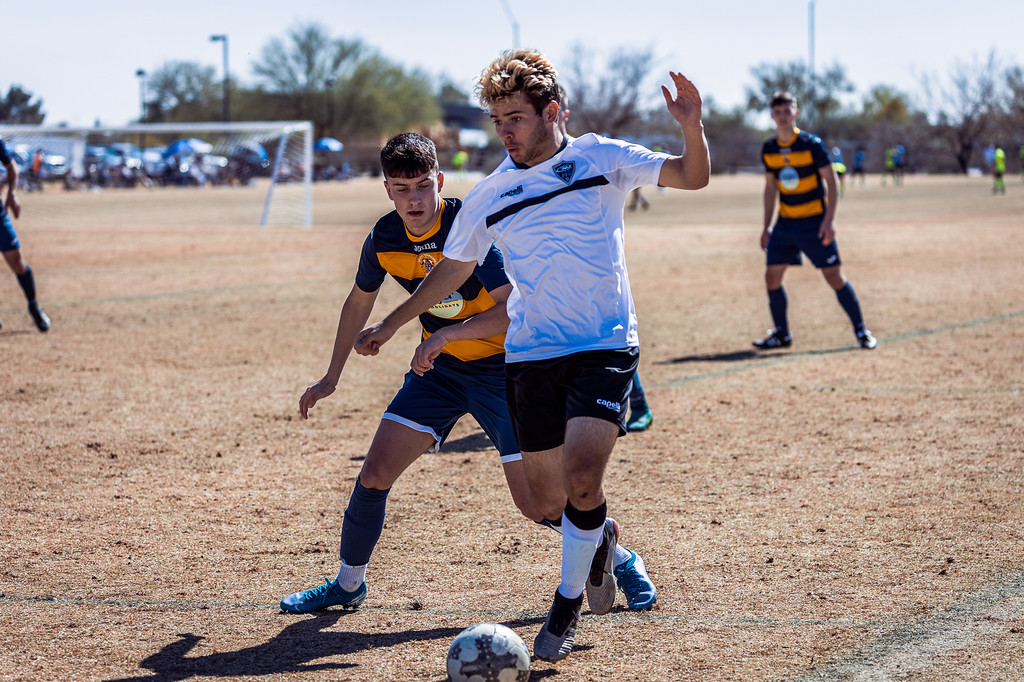
From a Physical standpoint, we should focus on the capacities that have the higher relevance in the game: Explosive Strength, Speed & Strength Endurance, Agility, and Aerobic & Anaerobic Lactic valences are fundamental.
Warm ups are now a must do. We recommend routines that move from global muscle groups to specifics to start, followed by a second stage in which they perform an activity that intends to review a concept trained during the week. A third part, free for the player to prepare for competition on his own is also highly recommended. You will encounter players with very different routines. Examples are players that juggle, others that walk or jog slowly around the field, others that listen to music, etc. This is perfectly acceptable and respects the individuality of the player.
Cooling down routines are also highly recommended and encouraged. This is another component of adopting high performance habits. Passive stretching, raising the legs against a wall or a fence, ice patches, or a regenerative jog after the game are some easy, practical routines that can be applied. Choose wisely using common sense, respecting the players’ preferences and considering their moods, especially after victories or defeats.
Maximal strength, as in all of the other age groups, is still discouraged, mostly for it’s irrelevance.
As always, try to be as soccer specific as possible when you train these valencies.
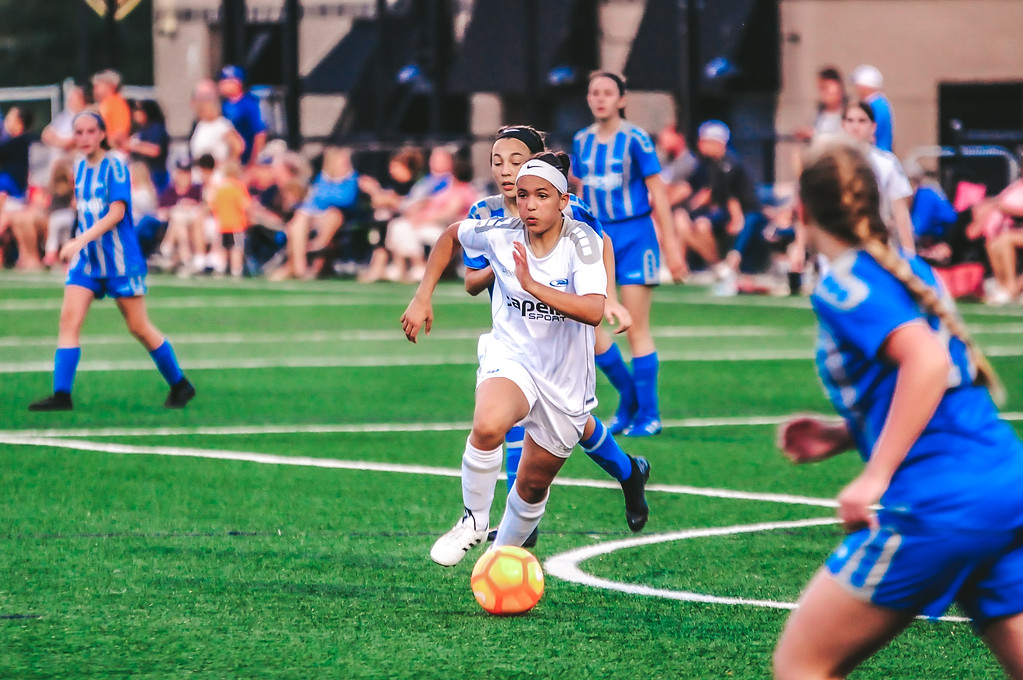
From a Technical standpoint, all of the technical gestures can be trained. Some skills that we frequently find technical flaws in by this stage are Heading, Crossing, and Shielding.
Technique is important but now is not oriented to the overall development of the player but from a position specific perspective. We have to be careful, however, about misunderstanding this statement. This doesn’t mean that center backs, for instance, would only work on heading and clearing. Finishing in the opponents’ box, for example, is a desired technical skill for all of the positions on the field, as players might certainly find themselves (even if only sporadically) in need of it.
As the focus of the stage is to work on tactical aspects, technical development is preferred within an Individual Development Plan agreed upon with the player that complements team training.
From a Tactical standpoint, players should already be effective in multi-lines (or small sided groups) concepts. Playing out of the back is an example of a training topic that implies multiple lines to work together. As the players evolve, we want to include more players towards performing team actions.
As we mentioned before, coaches should focus now on developing their players’ game understanding, so as to make the most out of the technical foundation already acquired. We do recommend having an alternative position for each player, as this favors their future versatility and capacity to adapt to different styles of play.
Meeting Parents
Empathy is one of Rush Soccer’s core values, and we believe it requires little empathy to understand parents’ love for their children and their desire to stay involved. That doesn’t mean parents know exactly how to be involved. Talk to them, guide them, present this curriculum before the start of the season and explain what you will do and why you will do it. Give them feedback and be open to listening to their concerns. Share expectations and use “we” rather than “I”. Parents and coaches need each other to optimize the development and experience of the players.


